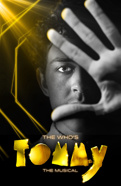Smashed Guitars, Hollywood Stars and a Bicycle Accident: The Amazing Journey of The Who’s Tommy
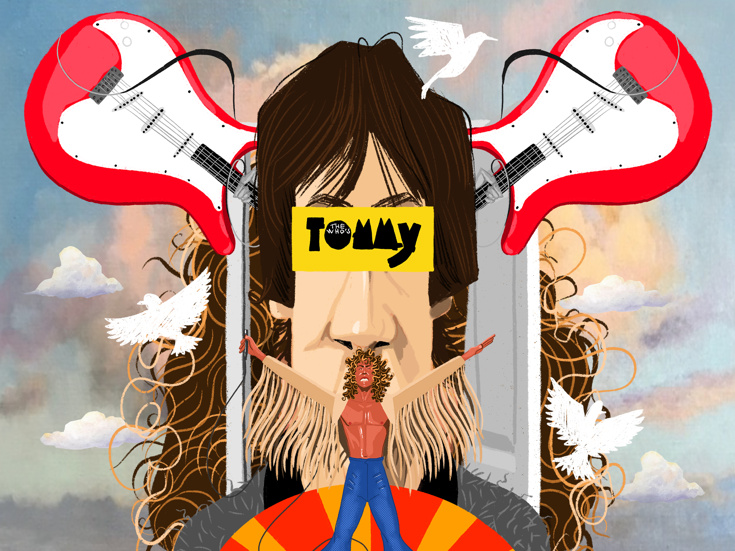
Since 1969, there’s been no shortage of ways to see, hear and feel The Who’s epic rock opera Tommy. Born as a groundbreaking double-LP, it served as a stunning vehicle for The Who’s pyrotechnic live performances, as well as the basis for an audaciously trippy 1975 film, before being adapted for the Broadway stage in 1993. Now, the Broadway revival is in previews at the Nederlander Theatre, with an official opening set for March 28.
It’s been an amazing journey. Here’s how it happened.
TOMMY: THE ALBUM
London, 1966. The Who is one of the hardest-rocking groups around. Frontman Roger Daltrey commands the stage with his blue-collar swagger and impressive microphone-swinging technique. Keith Moon’s drumming—much like the man himself—is dangerously out of control. John Entwistle plays bass as if it were a lead instrument. And guitarist Pete Townshend, also the group’s principal songwriter, has fashioned a wrenching, wailing guitar sound that evokes the noise and existential dread of war.
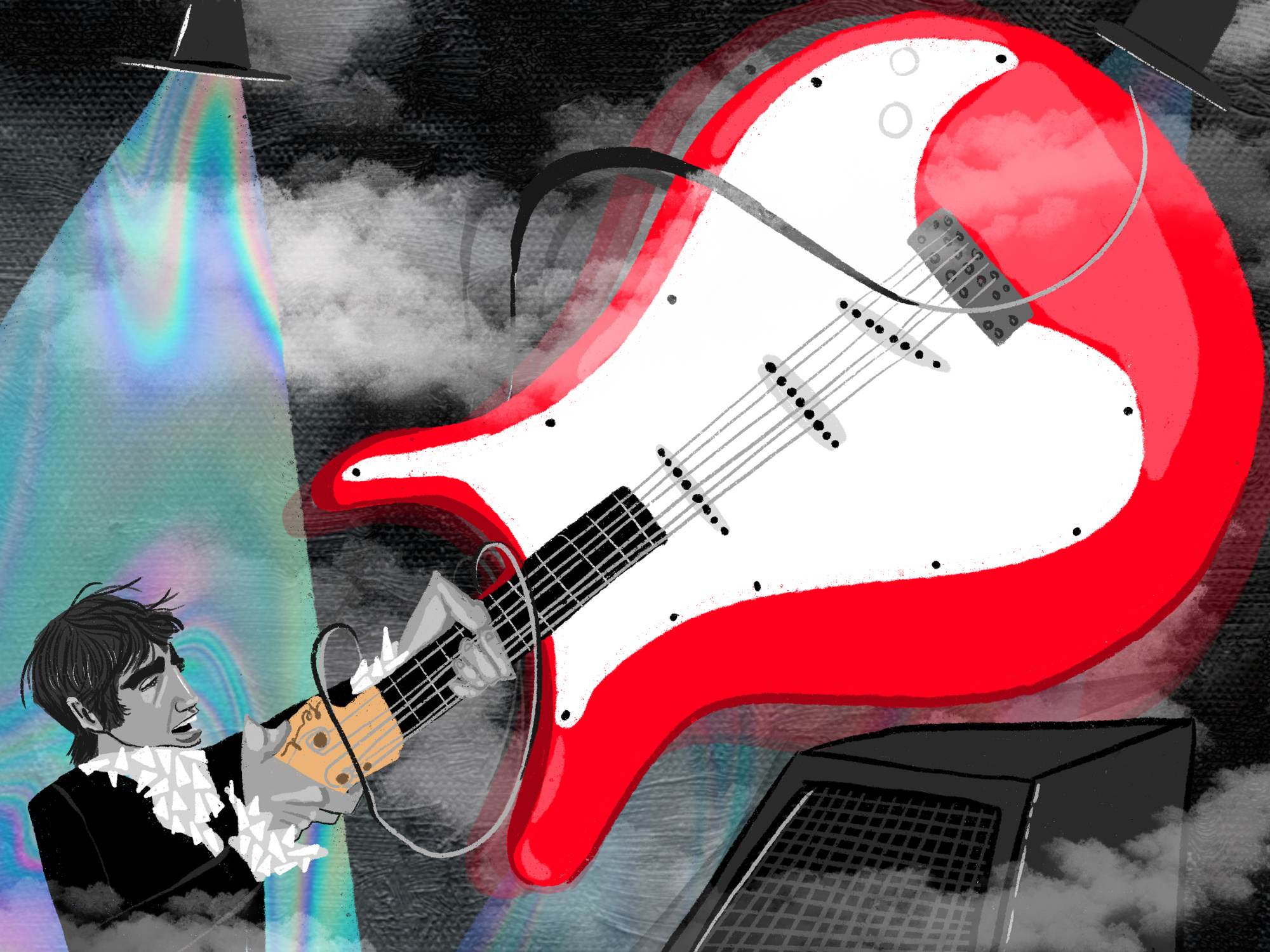
Townshend has also taken to smashing up his instrument at the end of shows—aggressive showmanship inspired by his art-school lessons in auto-destructive art. Townshend’s lyrics, meanwhile, reveal an introspective quality that’s unlike anything on the radio. In tracks like “Can’t Explain” and “My Generation,” Townshend grapples with what would become a favorite theme: the difficulty of communication.
By 1967, the music scene is in the midst of great change. New sonic frontiers are opening up. The album has become more important than the pop single. And the tripped-out, record-buying audience, it seems to Townshend, is in need of spiritual guidance. On top of that, The Who is in financial chaos. (The ritual demolition of the band’s gear isn’t helping.)
Townshend knows it's time for a big swing. To take The Who to the next level, he sets out to create—adopting a term lately thrown around by The Who’s manager, Kit Lambert—the first “rock opera.”
During endless tour bus rides around America, a character emerges in Townshend’s imagination: a young boy who becomes psychosomatically deaf, dumb and blind after seeing his father kill his mother’s lover. Victimized by those around him, including his own family members, he eventually regains his senses and becomes a kind of divine guru. Finally, he is rejected by his own followers. Townshend names him Tommy.
The story draws on Townshend’s own hazy, shame-shrouded memories of childhood trauma, as well as his fascination with the spiritual teachings of the Indian guru Meher Baba.
His protagonist’s uncanny predilection for pinball is a late addition: When Townshend previews the work to influential music critic Nik Cohn, the verdict is that the work is a bit self-serious. Eager to please, Townshend asks Cohn—a pinball enthusiast—if he would write a five-star review if Tommy was skilled at pinball. Cohn says yes, he would.
Townshend writes “Pinball Wizard” that night.
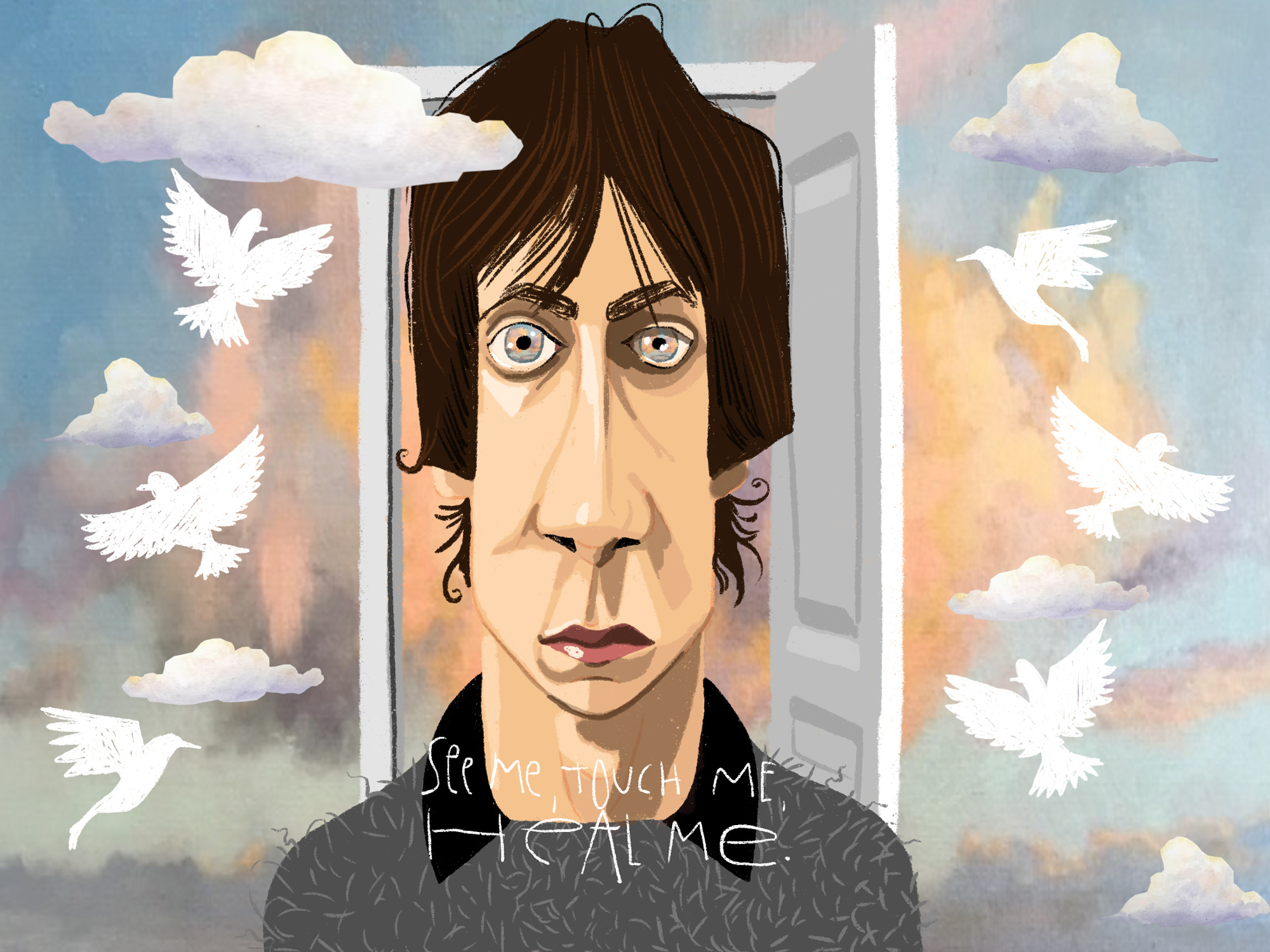
The band records Tommy at IBC studios in London from September 1968 to March 1969. Daltrey pushes himself ever farther vocally, pouring emotion into Tommy’s aching refrain, “See me, feel me, touch me, heal me.” Lambert helps keep the project grounded and on track, and persuades Townshend to incorporate a traditional overture.
The Who premieres Tommy at ear-splitting volume at a jazz club in London’s Soho on May 1, 1969. The double-LP album is released on May 19 in the U.S. and May 23 in the U.K.
Tommy is a hit, selling 200,000 copies in two weeks in the U.S. alone. In the New York Times, it is called (by Cohn) “rock’s first formal masterpiece.” Around the same time, Andrew Lloyd Webber and Tim Rice are working on a rock opera of their own, Jesus Christ Superstar. “[The success of Tommy] probably helped us commercially,” Rice later notes.
TOMMY: THE CONCERT
With Tommy, The Who takes its live show up a gear. On stage, Roger Daltrey discovers a new, adventurous physicality as Tommy—“I feel like I’ve been set free,” he would say later—and the album’s songs are received rapturously by audiences.
They are supported by Joe Cocker and the Grease Band for their first U.S. concerts. (The band goes on to perform on the Jesus Christ Superstar album.) Leonard Bernstein enthuses to Townshend after a show at New York’s Fillmore East: “Do you realize what you’ve done?!”
In August, 1969, The Who performs for 500,000 mud-soaked revelers on a dairy farm in upstate New York: Woodstock. Finally making it to the stage in the early hours of Sunday morning, they play songs from Tommy to a groggily transfixed crowd. Daltrey looks positively messianic—Townshend thinks he resembles a figure in an Old Master painting—singing “See me, feel me, touch me, heal me” as the sun rises. The set becomes one of the defining moments of the decade.
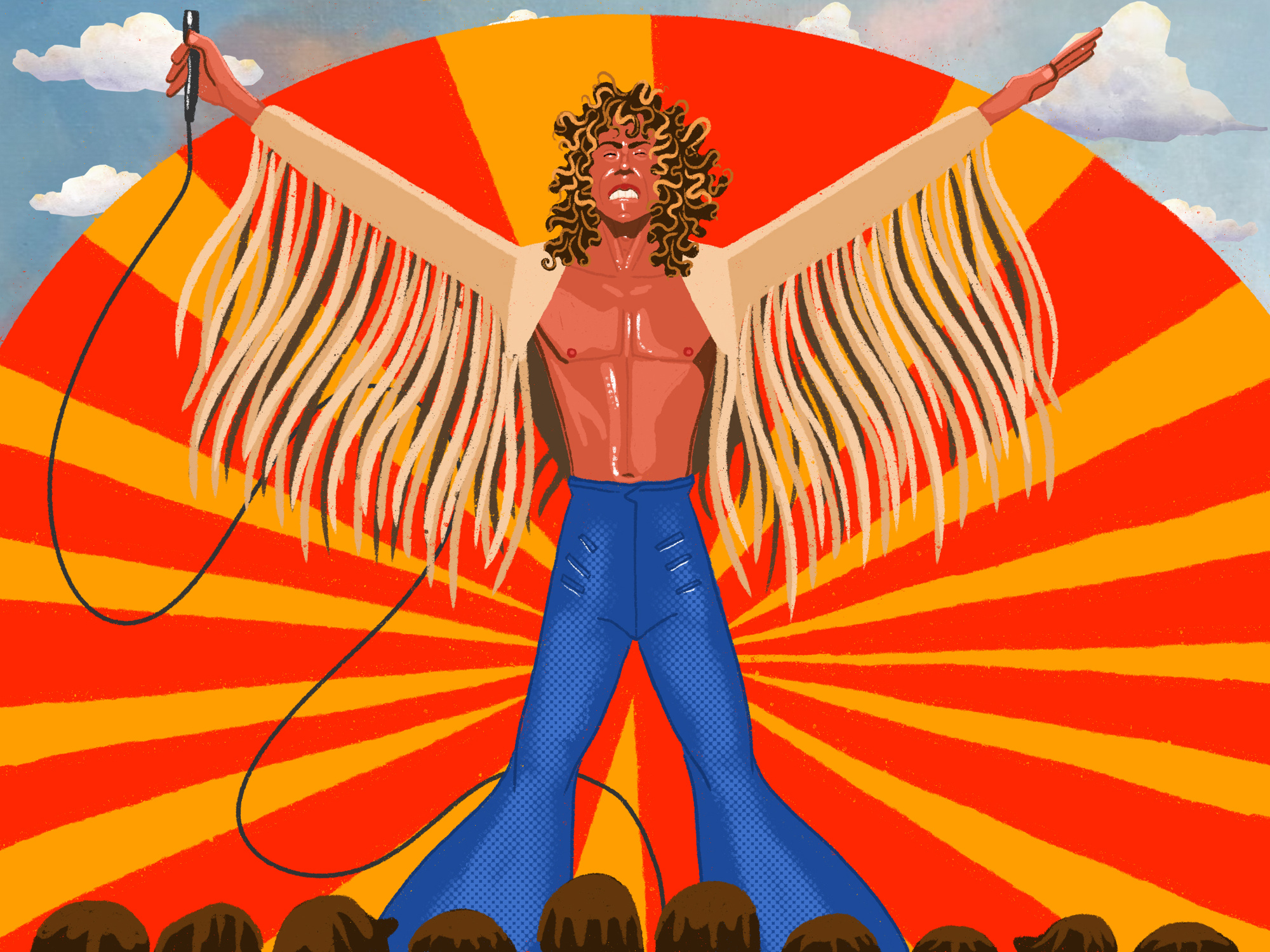
Before the year is out, another music critic writes that the group is “standing now on the rock world’s stage, haloed in fame, glory and gold.” The group continues to tour in 1970, doing two shows in one day at the Metropolitan Opera House in New York, where one operagoer remarks, “Without the libretto, it was more difficult than Italian opera.”
In another spectacular (later regretted) act of auto-destruction, Townshend orders the audio recordings from some 30 live shows from the period to be tossed into a bonfire.
TOMMY: THE MOVIE
In 1969, Pete Townshend and Who manager Kit Lambert outline a movie treatment for a film version of Tommy. It takes another four years before the project begins to properly materialize.
A major driving force behind the project is the producer Robert Stigwood, who has produced Hair on Broadway and, most recently, a film version of Jesus Christ Superstar. Meanwhile, renegade filmmaker Ken Russell signs on to direct. In the early ‘70s, Russell’s wildly diverse output includes a Tchaikovsky biopic, an X-rated historical drama and a tribute to MGM musicals starring English model Twiggy.
Russell calls Tommy “the best modern opera since [Alban] Berg’s Wozzeck.” He wants Who frontman Roger Daltrey to play the title character. Daltrey is not an actor—he was kicked out of the school play for being too disruptive—but Russell insists.
Looking tan, healthy and fit, Daltrey throws himself into the role—cartwheeling, hang-gliding, getting covered in snakes and willing himself into a glassy-eyed trance.
Along with the other members of The Who, including Keith Moon as the cheerfully sinister Uncle Ernie, Stigwood assembles an all-star cast. Ann-Margret, the Swedish-American actress who starred with Elvis in Blue Hawaii, plays Mrs. Walker, Tommy’s mother, despite only being three years older than Daltrey. (Wary of generating too much chemistry, Daltrey tries to avoid her on set. “Because you can’t fancy your mum, even your screen mum.”) Frequent Russell collaborator Oliver Reed plays Captain Walker. Jack Nicholson plays the Psychiatrist.
The cast also features Eric Clapton as a preacher in a church devoted to the worship of Marilyn Monroe, Tina Turner as the Acid Queen and Elton John as the Pinball Wizard. John stars in the film on the condition that he gets to keep his character’s four-foot-high Doc Marten boots. Stevie Wonder had hoped to play the role, but gets turned down, given his actual blindness.
Russell makes the story his own. In an echo of Hamlet, he has Tommy’s mother’s lover kill Tommy’s father, instead of the other way round.
The resulting film is full of fantastic, surreal sequences: Daltrey running, and running, over rolling waves; Elton John attacking a pinball-machine piano to a dazzling rendition of “Pinball Wizard”; Tina Turner effecting a seizure in extreme close-up; Ann-Margret, wearing a spandex catsuit, rolling around in baked beans and chocolate. (Ann-Margret cuts her arms while shooting the scene, requiring 27 stitches. “And here I come into the hospital, looking like a drowned person in this silver knit shrinking catsuit with blood all over,” she says.)
The movie, which screens at the Cannes Film Festival, thrills critics and audiences alike. “Mr. Russell's Tommy virtually explodes with excitement on the screen,” New York Times critic Vincent Canby writes. “[Tommy] is mad, funny, irreverent, passionately overproduced, very very loud and full of the kind of magnificent physical energy that usually wrecks a movie by calling attention to performance.” The soundtrack goes straight to No. 2 in the album charts and Daltrey is nominated for a Golden Globe.
“I’ve never done a movie like that before or since,” Ann-Margret later says. “But the whole experience was wonderful.”
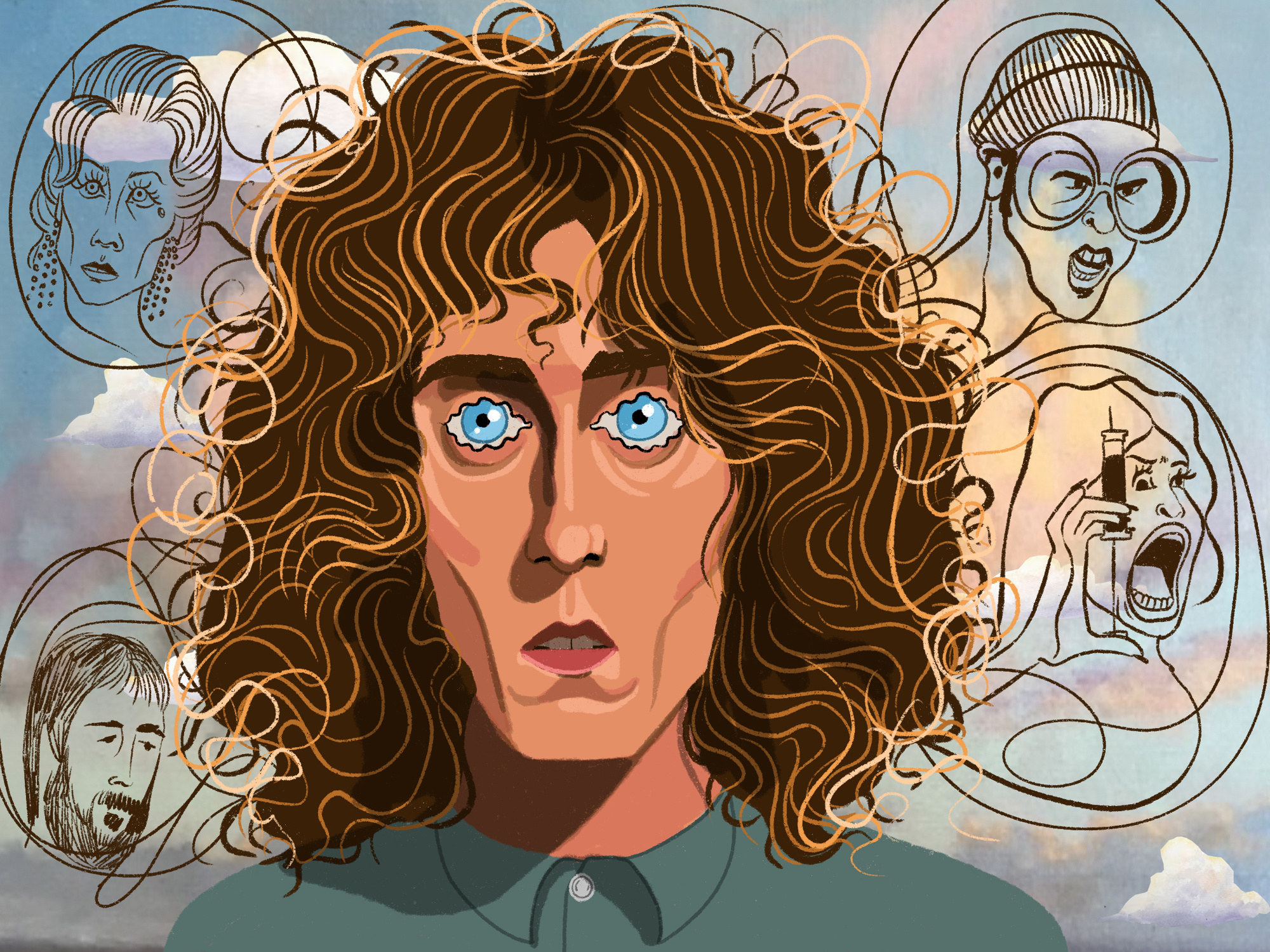
TOMMY: THE BROADWAY SHOW
In September 1991, Pete Townshend falls off a bike and hurts his wrist.
Unable to play guitar—the pick goes flying out of his hand on the upstroke—he finally takes notice of one of the many requests for the rights to present Tommy. There have been various Tommy stage productions over the years, including a dance-based adaptation by Les Grand Ballets Canadiens in 1970 and a Seattle Opera production, starring Bette Midler as the Acid Queen and Mrs. Walker, in 1971. But now, Townshend finally feels ready (and has the time) to collaborate on a stage version—if the right director should turn up.
Des McAnuff comes of age in the 1960s in Scarborough, Ontario, a suburb in Toronto. A guitar player since age 12, by high school he’s playing gigs around town with a number of bands. Inspired by Hair, he composes his own rock musical, Urbania, and convinces his high school to put it on. The production, which he co-directs, transfers to an actual downtown theater. A critic describes it as being reminiscent of The Who.
He finds a career in the theater, becoming a director with the Toronto Free Theatre, then leaves for the United States, founding the Dodger Theatre Company in New York City in 1978. Appointed the artistic director of La Jolla Playhouse in 1983, he directs works by Shakespeare, Chekhov, Thornton Wilder and Sondheim, and wins a Tony for the Broadway transfer of Big River.
In 1989, McAnuff comes across a Los Angeles Times review of a concert from The Who’s reunion tour—a performance of Tommy at the Universal Amphitheatre in Los Angeles with guest appearances by Elton John, Phil Collins, Billy Idol, Steve Winwood and Patti LaBelle. The critic Dan Sullivan compares the energy and cathartic power of a rock concert to the stuffiness of contemporary theater. Sullivan ends the review noting how odd it is that Tommy has never had a first-class Broadway-budget musical staging. “It might not be too late.”
McAnuff thinks, We could do it.
Two years later, McAnuff learns that the rights to Tommy are up for grabs. After months of listening to the album over and over in his car, he flies to London to meet with Townshend. Their first proper meeting in the lobby of the Portobello Hotel takes four hours.
They get to work on adapting the book, with McAnuff approaching the material in much the same way he would a Shakespearean text. Together they clarify plot points, fill in gaps, develop the characters and work out a song order that makes sense. They elect to ignore Ken Russell’s modifications to the story and work from the original record. (Once again, it’s Tommy’s father who kills Tommy’s mother’s lover.) “It’s almost like taking a series of sketches and getting out the tubes of oil,” McAnuff later says of the process.
They bring a renewed focus to Tommy’s theme of childhood trauma—McAnuff’s own father, an R.A.F. Spitfire pilot, had died in a car crash six months before his son was born—and tease out the autobiographical elements that were always there.
Tommy evolves into a metaphorical retelling of Townshend’s own musical journey and the birth of rock’n’roll. “It’s totally obvious,” McAnuff tells the Los Angeles Times, “that the pinball machine was really a Stratocaster. And that completes the notion of Pete really being Tommy.”
The Yale-trained actor Michael Cerveris is cast as Tommy. “Having spent my teenage years and my 20s having parallel lives as an actor and a rock kid, all of a sudden there is an opening for someone who is passionate about both things,” he says later. On the first day of rehearsal, Cerveris gets the feeling the show is destined to be “culturally, historically meaningful and significant.” He adds four or five notes to the top of his range while preparing to play the part.
After a premiere at La Jolla in 1992, the show sets its sights on Broadway. Townshend invites Cerveris to London to provide a sense of his childhood and the early days of The Who. “I can’t teach you how to act,” he tells Cerveris, “but I can teach you how to be a rock’n’roll star.”

After significant revisions, including a new ending and a new song by Townshend—“I Believe My Own Eyes,” about the breakdown of Tommy’s parents’ marriage— the show opens at the St. James Theatre in 1993.
Broadway audiences go wild for Tommy. In his review for the New York Times, Frank Rich calls it “the first musical in years to feel completely alive in its own moment.” McAnuff wins his second Tony for Best Director and Townshend wins Best Score, sharing the award with Kander and Ebb for Kiss of the Spider Woman. The show also wins Best Choreography, Best Lighting Design and Best Scenic Design.
“Rock and roll needed to be brought to Broadway,” Townshend tells Playboy. “I always felt that Tim Rice and Andrew Lloyd Webber, with Jesus Christ Superstar, rode off with part of my inheritance. I wanted to claim it back.”
TOMMY: THE RESURRECTION
Des McAnuff is appointed artistic director of the Stratford Shakespeare Festival in 2008. In between directing Shakespeare plays, he revisits Tommy. The production is somewhat faithful to the original, but McAnuff starts feeling like it might be time to rethink the show.
Townshend pays a visit, wanting to collaborate with McAnuff on a new Tommy movie— one based on their version of the story, putting the fantastical Ken Russell version to the side.
In the process of hammering out the screenplay, it dawns on the pair that the themes of Tommy are as resonant as ever. There’s more awareness around the consequences and prevalence of childhood trauma. People are desperate for leadership, craving spiritual guidance and staring senselessly at mirrors they carry around in their pockets. Plus, the powers of theatrical spectacle have come a long way since 1993.
It’s about time, they realize, for Broadway audiences to see, hear and feel Tommy all over again.
Sources:
Daltrey, Roger. Thanks a Lot Mr Kibblewhite: My Story (2018)
Dando-Collins, Stephen. Mr Showbiz: The Biography of Robert Stigwood (2017)
Fletcher, Tony. Dear Boy: the Life of Keith Moon (1999)
McAnuff, Des. Interview by the author. (2024)
The Who: Sensation – The Story of Tommy (2013)
Townshend, Pete. Who I Am: A Memoir (2012)
